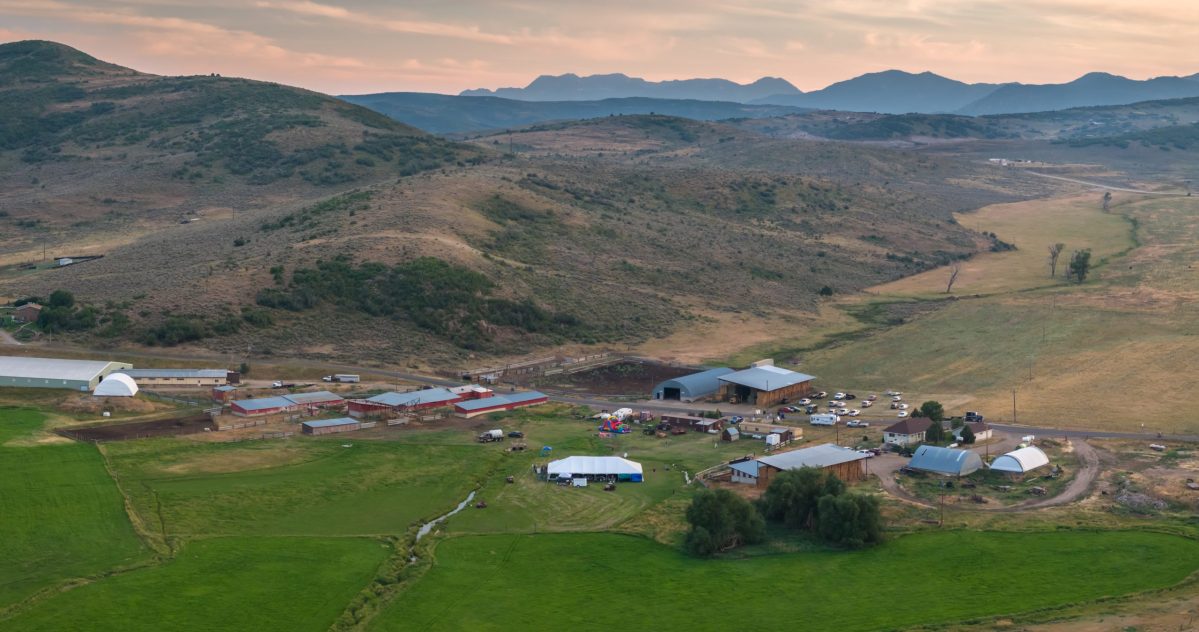A crucial balancing act is unfolding on the East Side as Summit County officials grapple with the challenges of managing development and preserving the region’s rural character within a changing landscape.
Representatives from the Eastern Summit County Planning Commission on Wednesday highlighted the issues they’re experiencing during a joint meeting with the County Council and Planning Department staff as officials embark on a comprehensive process to rewrite the community’s general plans.
While the Snyderville Basin document was last updated in 2015, the East Side’s planning guide hasn’t been changed since 2013 and it lacks structure. Small-town vibes are emphasized, but the simple plan doesn’t allow for the same reinforcement — a major concern for planning commissioners.
“We approve projects, we do a lot of conditional use permits, then it’s ‘Well, how are we going to enforce this?’” Community Development Director Peter Barnes explained.
As changes are made and code updates are implemented, staff must enact greater discipline in applying the rules as applications come in.
Planning Commission Chair Alex Peterson said it’s been a challenge to maintain consistency in the face of change, especially when people expect the rules to be the same as five to 10 years ago. The East Side wants to retain its agricultural rural character, but it’s also feeling the pressures of housing and trying to define its own industry.
So officials are considering creating an agricultural tourism zone to encourage ideas similar to Ballerina Farm’s creamery concept and businesses like the cidery proposed off S.R. 32 in Marion. These proposals work well with the existing landscape of eastern Summit County, where there are no ski slopes or large commercial zones.
Planning Commissioner Rich Sonntag characterized the current zoning as a checkerboard of large residential and agricultural uses that allow for very little density, reducing the opportunity for affordable housing on the East Side. He said that will have to change in the future.
“Everything that comes across our desk: dog kennels, contractor’s yards, quarries, all these things, are allowed in every zone on the East Side because the table of uses is unduly broad and unrestricted,” he said. Officials need to go through and examine the zoning requirements as well as the table of allowed uses.
Developments in eastern Summit County need to be accessible in terms of transportation and public transit, self-sustainable to ensure residents aren’t traveling to Kimball Junction or Park City to meet their needs, and contain enough independent commercial activity to provide employment opportunities and attract people living elsewhere in the county.
Sonntag said that can be achieved through an agricultural tourism zone or a recreational commercial zone, which was being considered several years ago. He called on planning staff to develop clear guidelines that are defined in the general plan and the county code.
“As we’re dealing with this tabula rasa of it is now on the East Side, we need the tools to do so, zoning in places where in fact we need it if we’re ever going to have the housing we need, which again needs to be supported by enough economic activity to make it work,” Sonntag said. “Small town character, not small town character, I think that will be redefined as we approve these projects as to what we require. Because these days, when you approve a project, it’s not just a density map.”
The other planning commissioners, Bill Wilde and Clint Benson, echoed comments about the need for zoning amendments and additional code enforcement.
Wilde named Browns Canyon as a particular pain point. The area was described as an unregulated “dumping ground.” He suggested creating an industrial zone to help control what applications are coming in while also maintaining property rights in the area.
“The zones that we have are not working appropriately, and just adjusting the use type is not going to do anything apart from either remove something from the zone or add something,” Barnes said.
The possibility of other large developments, like Cedar Crest Village and the West Hills proposal, was also a big concern. Cedar Crest hasn’t returned to the Planning Commission for a few weeks, but Barnes anticipates a “crash of information” when representatives present their next update.
Planning commissioners are also expecting similar applications in the Wanship area. Wilde said traffic heading to Coalville will become an issue unless it’s addressed before any building starts. Development in eastern Summit County has historically been centered around Hoytsville, Woodland and Francis.
No formal decisions were made this week. The conversation was intended to guide planning efforts moving forward. The Eastern Summit County Planning Commission meets on the first and third Thursday of every month to discuss the latest applications.

